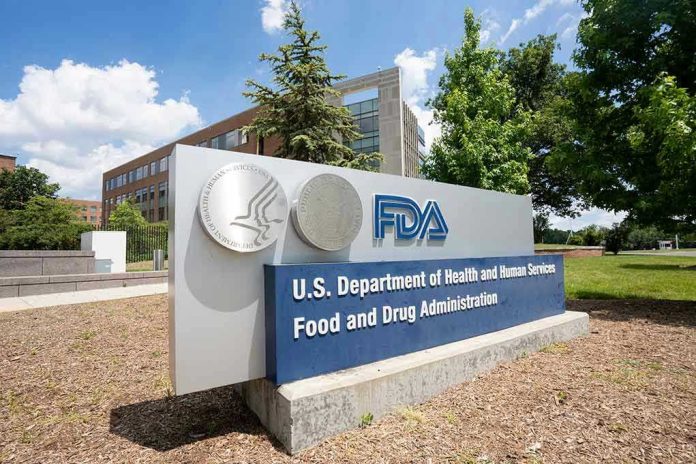
What do you do when the very agency meant to safeguard public health becomes the embodiment of bureaucratic fumbling, risking lives in the process? Welcome to the latest FDA debacle.
At a Glance
- Sarepta Therapeutics halts Elevidys shipments to non-ambulatory patients after FDA scrutiny.
- Three patient deaths linked to gene therapy, prompting regulatory intervention.
- The FDA faces criticism for delayed and seemingly reactionary measures.
- Sarepta’s financial instability and share price drop amid regulatory chaos.
FDA’s Questionable Oversight
Sarepta Therapeutics, the biotech firm behind Elevidys, a gene therapy for Duchenne muscular dystrophy (DMD), is embroiled in a regulatory storm. Following the deaths of three patients, the FDA has requested a halt to Elevidys shipments. The gene therapy, which had been a beacon of hope for DMD patients, is now under severe scrutiny. While Sarepta initially complied by stopping shipments to non-ambulatory patients, their decision to continue for ambulatory patients has raised eyebrows.
For a regulatory body tasked with protecting public health, the FDA’s response has been anything but reassuring. The agency’s request came only after media reports highlighted the patient deaths. Sarepta claims it learned of the FDA’s intent through these reports, suggesting a lack of direct communication. This raises serious questions about the FDA’s transparency and efficiency in handling such critical matters.
Impact on Stakeholders
With Sarepta’s Elevidys gene therapy in the spotlight, several stakeholders find themselves in precarious positions. The DMD community, hopeful for a breakthrough treatment, now faces uncertainty and frustration. Sarepta, under intense scrutiny, grapples with financial instability as its share price plummets. Investors and shareholders, who back the company financially, are understandably worried about the potential long-term impacts.
Healthcare providers, caught in the crossfire, must navigate these turbulent waters, balancing patient care with regulatory compliance. Meanwhile, the FDA’s credibility takes another hit, as its decision-making processes are dissected by both the public and industry experts. The regulatory body’s actions have prompted calls for greater transparency and accountability, not just from Sarepta, but from the FDA itself.
Future of Gene Therapy
The long-term implications of this situation extend beyond Sarepta and its stakeholders. The future of gene therapy for DMD and similar disorders hangs in the balance. The FDA’s actions could set a precedent for stricter oversight and faster intervention, potentially stifling innovation within the biotech industry. Companies developing AAV-based therapies may face increased regulatory hurdles, impacting the speed at which new treatments are developed and approved.
While patient safety must always be a priority, the balance between innovation and regulation is delicate. The current scenario underscores the need for regulatory bodies to act swiftly and decisively, without stifling advancements that could transform lives. As the situation unfolds, the biotech sector and its stakeholders watch closely, hopeful for a resolution that prioritizes both safety and innovation.
Sources:
Sarepta Therapeutics Community Letter (July 19, 2025)
BioPharma Dive analysis (July 21, 2025)
NeurologyLive coverage (July 18, 2025)
BioSpace reporting (July 21, 2025)










